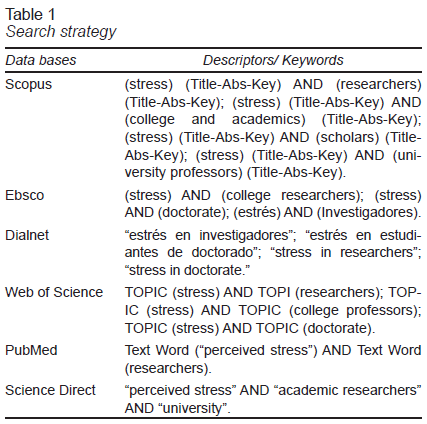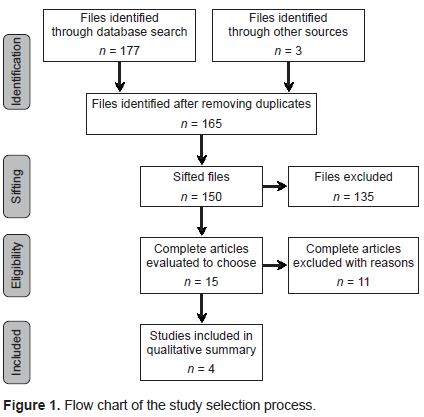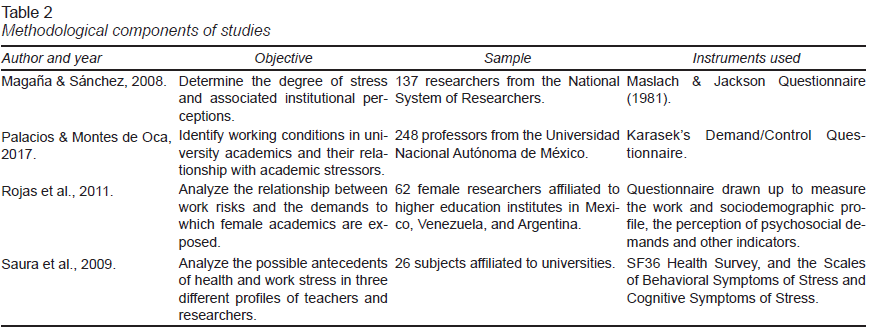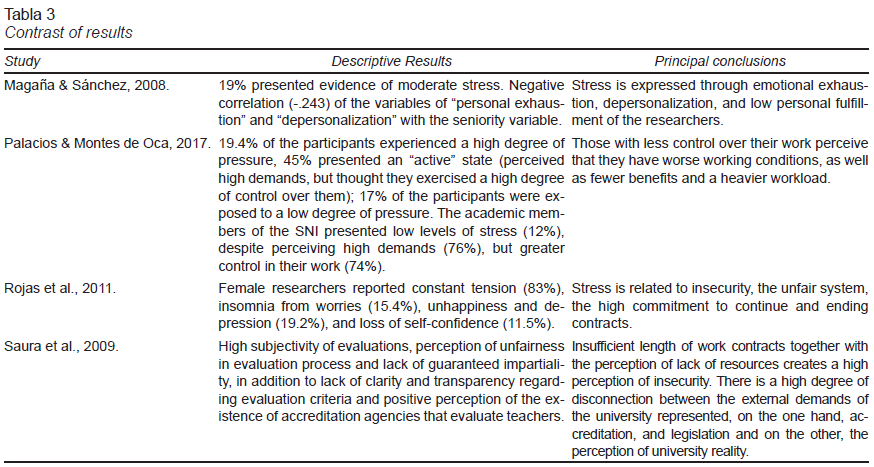Background
Scientific and technological development is the result of research, which seeks to develop original contributions within an area of study, help eliminate technological dependence from abroad, and contribute to sectors of society that require new knowledge and/or innovations (Reynaga Obregón, 2002).
Although academic production can be considered an indicator of the economic growth of countries (Musi-Lechuga et al, 2018), the exercise of research entails various challenges which, in turn, entail securing financial resources to develop it and financial remuneration for those who carry it out, which is cited as one of the greatest difficulties. In the 1980s, the Anglo-Saxon public administration created a system of monthly grants for researchers, in keeping with the neoliberal policies promoted by the United States, the World Bank and the International Monetary Fund (Lloyd, 2018; Álvarez, Mojardín, & Audelo, 2014). By this logic, resources are granted based on scientific productivity quotas such as the publication of articles in indexed journals, books with prestigious publishing companies, and the production of patents or human resource training (Lloyd, 2018).
The literature also reports other problems for those who conduct research. Researchers from American, English, Canadian, Israeli, and Iranian universities have reported stress levels associated with the process of ensuring job security, work overload, time constraints, and the lack of institutional recognition (Urquidi & Rodríguez, 2010).
For researchers from China and Japan, the main sources of stress are professional evaluation processes and the perception of lack of time (He et al., 2000; Meng & Wang, 2018). In the case of Venezuelan researchers, stressors include the country’s political uncertainty, scant economic resources, and lack of time (Sánchez de Gallardo & Mantilla de Gil, 2005). For Argentine researchers, the greatest causes of stress are interpersonal relationships, low salaries, multiple tasks, lack of recognition, and inadequate workspaces (Crabay et al, 2001).
In Mexico, there are studies identifying the presence of stress due to work overload, which in turn is part of the incentive or scholarship programs, in addition to the over-bureaucratization of these evaluation processes, the lack of gender equality policies, and the high concentration of research in certain states, disciplines, and institutions. Other nationwide problems include the lack of economic support and job opportunities, the low level of production of articles and patents, and scant international collaboration (Urquidi & Rodríguez, 2010).
The literature shows that in addition to great intellectual and critical thinking skills in the performance of their work, researchers also require non-academic skills, such as time management, decision-making, as well as strategies to cope with stress-generating situations (" Baqutayan, Abd Ghafar, & Gul, 2017"). It is of particular interest to delve into the processes associated with the perception and regulation of stress in researchers since this can reduce their scientific and labor productivity.
Although stress is a term with different definitions and conceptions, this article will refer to stress as an interaction, defined as a substantial imbalance between demand and the response capacity of the individual (Osorio & Cárdenas Niño, 2017).
It is possible to speak of chronic stress when stress occurs for a long time, due to daily stressors that are ignored or poorly managed, which prevent individuals from living a normal life for an extended period. If chronic stress is dealt with inadequately, it becomes burnout, characterized by a state of emotional exhaustion and depersonalization (Sánchez-Narváez & Velasco-Orozco, 2017).
The effects of stress on health are diverse and severe, and can include cardiovascular problems, such as increased heart and blood pressure, arrhythmias; metabolic problems such as increased glucose and cholesterol, triglycerides, protein catabolism, in addition to other responses such as increased muscle tension, higher respiratory rate, sweating, pupillary dilation, hyperventilation, greater thyroid activity, reduction of sexual gland activities, and immune system competence (Navinés, Martín-Santos, Olivé, & Valdés, 2016).
At the same time, there are also psychological responses caused by stress, which can be classified as emotional, such as anxiety, fear, anger, and depression; cognitive, such as denial, mental blocks, irritability, rumination; and behavioral, such as substance abuse and aggressiveness (Herrera-Covarrubias et al., 2017).
Clinically, chronic stress symptoms are like those of depressive and anxiety disorders. As for depression and stress, some researchers argue that there is no difference between their symptoms, or that burnout is a dimension of depression rather than a different phenomenon (Sánchez-Narváez & Velasco-Orozco, 2017). However, the most common conception is that chronic stress will lead to emotional exhaustion, which acts as a risk factor for depression. At the same time, prolonged anxiety may result in psychological stress, in addition to the fact that greater emotional fatigue and cynicism increase anxiety.
Few studies have focused on analyzing the presence of stress in researchers, in comparison with the large number of studies that address this problem in health professionals, such as physicians, nurses, and therapists, or focus solely on teachers at various educational levels. A systematic literature review was therefore conducted to identify and contrast methodological components and the main findings of studies on stress in researchers.
Method
The research question was the stress level and the main stressors in university research professors, based on the components of the Population, Exposure, Comparison, Results tool (Spanish acronym PECO). It was decided to focus mainly on cross-sectional studies, due to their affinity with the project of which this research forms part.
Inclusion criteria
Full-text and open-access scientific articles were included, in both Spanish and English, on university professors engaged in research, over 18 years of age, regardless of sex. The fact that the information on stress levels and stressors was obtained through psychological instruments such as interviews, questionnaires, and/or psychometric scales was also considered.
Information sources
The search was conducted in six electronic databases: Scopus, Ebsco, Dialnet, Web of Science, Pubmed, and Science Direct. Conference proceedings, expert opinions, systematic reviews, book chapters, articles in which the text was unavailable, or which were paywalled, were taken as exclusion criteria, as was belonging to areas other than the area of psychology or psychological disciplines. This search yielded 180 original articles.
To undertake this study, a search was conducted on the Scopus, Ebsco, Dialnet, Web of Science, Pubmed, and Science Direct databases. The search period included publications from 2008 to 2019 and yielded 180 original articles.
Search strategies
The search for articles was conducted using various combinations of the following search terms: “stress,” “researchers,” “university professors,” “academic researchers,” “university,” “college,” “academics,” “scholars,” “estrés,” “investigadores,” “teachers,” and “professors,” as shown in Table 1.
The search for articles in the databases was carried out by delimiting the articles and ensuring that they corresponded to the area of psychology, or the psychological discipline being studied, and that they corresponded to academic publications. The keywords used for the search were “stress,” “researchers,” “university professors,” “academic researchers,” “university,” “college,” “academics,” “scholars,” “stress,” “researchers,” “teachers,” and “professors,” as shown in Table 1.
Using the methodology of systematic reviews, and based on the PRISMA statement, specifically the flow chart, they were first identified by searching databases. Secondly, the titles were screened, and if they appeared to meet the inclusion criteria, the abstracts were read. Third, the full texts were read, and if they met the criteria, they were included in the qualitative review.
Results
This procedure, involving the application of inclusion criteria, yielded 180 articles, 15 of which were excluded from the screening process, because the titles did not correspond to the criteria or because they duplicated other articles (Figure 1).
Once 165 articles had been selected for abstract screening, 135 were excluded since they failed to include the target population, measured, and performed analyses without reporting stress or stress levels, or lacked the relevant information.
Eleven of the15 full texts obtained were excluded because they had been conducted on populations that failed to meet the inclusion criteria, mainly teachers at other educational levels.
Finally, four articles obtained from the Dialnet database were included for the quantitative synthesis.
Sample description
One of the studies was conducted in Spain, another in Peru, two in Mexico, and one in three countries (Mexico, Venezuela, and Argentina). The total number of subjects in the collected studies was 671, ranging from 26 to 248. All the studies were undertaken on respondents of both sexes, except for the research by Rojas et al. (2011), in which only women participated. All the subjects formed part of the research and were affiliated to universities, with an emphasis on research (Table 2).
The sociodemographic characteristics of the subjects who took part in the studies included are described below. The first article, by Magaña Medina and Sánchez Escobedo (2008), was conducted in Yucatan, Mexico, with on 109 researchers belonging to the National Research System. Seventy-three per cent of them were men and 29% women, with an average age of 47 years, and an age range of 33 to 72.
Palacios Nava and Montes de Oca Zavala (2017) also conducted their work in Mexico, at the Universidad Nacional Autónoma de México (National Autonomous University of Mexico [Spanish acronym UNAM]), with 248 academics, 130 men and 118 women, with an average age of 53. Rojas et al. (2011) studied a sample of 26 researchers, aged between 30 and 62, with an average age of 49.08.
Finally, the study by Saura, Simo, Enache, and Fernández (2011) was conducted with 26 academics, divided into the categories of assistants, assistant lecturers, and permanent collaborators. The first study, comprising assistants, consisted of 14 academics, 64.29% women and 28.57% men, with an average age of 28.4.
The second category, assistant lecturers, was made up of eight academics, with an average age of 34.6, all of whom were women with doctorates. Lastly, the third category, permanent collaborators, was the smallest, with four participants, two men and two women, with a mean age of 45.5.
The instruments used by the authors of the four studies differ from each other, but were all designed to measure stress, except for the article by Magaña Medina and Sánchez Escobedo (2008), which used the Maslach and Jackson questionnaire to measure burnout, which was eliminated due to the authors’ constant mention of stress, and the relationship between the latter and burnout syndrome.
As for the results obtained by the research, patterns emerged in terms of the stress levels displayed by the subjects, and the stressful variables, particularly associated with variables such as perception of control and work or environmental demands, their state or job category, having grants or incentives, and, to a lesser extent lifestyle habits. In addition, the relationship between stress and other variables, such as sociodemographic variables, is unclear and the results inconclusive.
Rojas et al. (2011) studied 26 researchers from Mexico, Venezuela, and Argentina to analyze the relationship between the occupational risks and demands to which researchers are exposed, and to determine the risk factors to which they are subjected, through variables such as their seniority levels, health indicators, work stress and level of satisfaction in their research work. The main obstacles reported by researchers were the lack of job flexibility, shortage of financing, the political-economic situation of the country, and the lack of appreciation and understanding of research work.
Magaña Medina and Sánchez Escobedo (2008) also conducted a study of 109 Mexican researchers to determine their degree of stress and explore their perception of the institutional conditions associated with this stress response. The results show that only 19% of the subjects showed evidence of moderate stress, which they reported was caused by work overload, the multiplicity of roles, the different evaluation systems, and the levels of responsibility assigned, all of which form part of the emotional exhaustion construct. However, the presence of stress was unrelated to other variables, such as the institution, gender, age, or marital status of the researcher, except for seniority level.
Palacios Nava and Montes de Oca Zavala (2017) studied 248 teachers, 79 of whom were researchers and 84 of whom belonged to the National Research System, to determine the working conditions of university academics and their relationship with the prevalence of stress. The results, which are similar to those of the study by Magaña Medina and Sánchez Escobedo (2008), showed that 19.4% of all academics had high levels of stress, 17% were under low pressure, 45% were active (in other words, they faced heavy demands, but also perceived they had a high degree of control of the situation) while 18.9% were considered passive (they were presented with low demands, despite perceiving that they had a low degree of control of the situation) (Table 3).
Saura et al. (2011) conducted a study to analyze the health history associated with work stress in the three categories or work profiles with 26 subjects, classified as assistant lecturer without a doctorate, assistant lecturer, and permanent collaborator, evaluated using the SF36 Health Survey and the Scale of Behavioral Symptoms of Stress and Cognitive Symptoms of Stress. The results show that assistant lecturers without a doctorate had moderate stress levels, except for those whose contracts were due to expire, who showed high stress levels. In addition to the expiration of their contracts, they were also anxious about obtaining research results and the instability of these contracts.
Most assistant lecturers, all of whom were female, presented moderate levels of stress. Those with higher scores reported that situations such as the insecurity of their research results, knowing when their contracts ended, not being in a stable work situation, and tiredness due to working hours were their main stressors.
At the same time, permanent collaborators, who were mainly engaged in teaching, displayed the lowest levels of stress, ranging from medium to very low, mainly due to the daily pressures of teaching or from their superiors, yet without being overwhelmed by the demands of work, and considered that they had sufficient resources. They were not at all concerned or unsure about their job security.
Discussion and conclusion
It is common to hear stress referred to as the 21st century disease. It is also common to hear of its effects and consequences, which, beyond the damage it causes to the body, is responsible for millions of dollars in losses for companies and governments alike, due to the disability and absenteeism it creates in those suffering from this problem.
Although stress is not a disease but rather the perception of a person’s inability to cope with a situation using his resources, it causes sufficient economic damage to elicit medical, psychological, and organizational interest which, so far, has not usually reflected either effects or results. This may be because efforts to reduce stress levels have not focused on reducing social or job insecurity, the high competitiveness promoted by firms, or the social or labor demands created by situations in which people feel incapable and helpless.
The effects of stress at work affect people’s health, causing serious consequences for their well-being, reducing their job prospects and salaries, negatively affecting family incomes, and entailing high direct and indirect costs for the economy.
Accordingly, if health at work fails, so will production and economic development. Although mental health problems affect the health of people in their workplace, they will also have negative effects on their productivity and economic development.
In 2007, 40 million people in the European Union suffered from work-related stress, whereas in 2009, stress accounted for 50% to 60% of lost workdays. For its part, the United States loses $2.5 billion USD in productivity (Oficina Internacional del Trabajo [OIT], 2016a; 2016b). Other data indicate losses of 10% to 20% of GDP related to mental disorders, mainly depressive disorders (Organización Mundial de la Salud [OMS], 2008).
A similar result to those obtained in this review, obtained by the European Survey on Working Conditions (European Agency for Safety & Health at Work, 2014), indicates that 36% of European workers perceive that they work “All or almost all the time” under pressure, usually to meet tight deadlines, while 33% of them declared that they had to work very quickly (Organización Mundial de la Salud [OMS], 2010). For its part, the “Report on Psychosocial Risks in Europe: Prevalence and Prevention Strategies” (Eurofound & EU-OSHA, 2014) observes that 25% of workers stated that they had experienced work-related stress (European Agency for Safety & Health at Work, 2014).
In other countries, it is also possible to see enormous annual losses due to absenteeism caused by stress, in addition to the health costs associated with treatments. In Australia, the cost amounted to $5.3 trillion Australian dollars for stress-related problems at work during the period 2008-2009, with an addition $8 billion USD for problems associated with depression. In Canada, expenditure on work stress problems in 2011 stood at $20 trillion dollars, whereas in France, stress-related losses in production and work varied between 1.9 and 3 billion euros in 2007. In Germany, this amount increased to 29.2 billion euros in 2008, and finally, in Spain, health costs for mental disorders fluctuated between 150 and 372 million euros in 2010 (OIT, 2016a).
The results observed in the studies compiled here are inconclusive, despite showing approximately the same stress levels, which is why they are considered more valuable. At the same time, they also seem to coincide in various issues, such as certain levels of stress, when the latter occurs, and the variables that can be considered stressors in this population.
Whereas Magaña Medina and Sánchez Escobedo (2008) conclude that there is a correlation between stress and the seniority levels of researchers, Saura et al. (2011) found that younger researchers with less job stability displayed stress levels that fluctuated between moderate and high, particularly those whose contracts were due to expire.
Similar results to those of Magaña and Sánchez were obtained by Palacios Nava and Montes de Oca Zavala (2017), who did not find a statistically significant relationship between stress levels and type of hiring.
A very different situation was observed in the work category in the article by Palacios and Montes de Oca, in which stress levels correlated with being a researcher, teacher, or academic technician. This study also found correlations between precarious working conditions and high stress levels, in addition to a propensity to develop diseases.
Studies that reported lower levels of stress in researchers found that this was produced by the pressure of teaching or was related to problems with their superiors and was unaffected by labor demands such as insufficient resources or job insecurity (Saura et al., 2011).
Conversely, the higher levels of stress reported were caused by the lack of job flexibility, shortage of financing, work overload, multiplicity of roles, different evaluation systems and levels of responsibility assigned.
The main findings of this review are the similar stress levels that occur in research professors in a percentage that varies by 20% and the psychological and physiological consequences associated with this condition, such as pain in the neck, chest and shoulders, and problems with concentration and the ability to make decisions, in addition to the difficulty of coping with problems in the psychological realm.
Due to the complexity of research, it would not be advisable to propose public policies designed to reduce stress and increase variables that act as drivers of well-being and resilience. Instead, the aim should be to seek a paradigm shift in the systems for evaluating research, postgraduate studies, and the university environment, as proposed in the Introduction.
That said and given the impossibility of an immediate change to the international paradigm, there are actions that can be taken both at the individual and institutional level. In the first case, all therapeutic interventions can be included, mainly those for which there is ample evidence, such as cognitive-behavioral techniques (cognitive restructuring, stress inoculation, social skills training, and coping techniques, such as emotional regulation and self-control), relaxation techniques and even leisure activities.
From an organizational or institutional point of view, interventions should first be focused on stress prevention. These strategies are intended to control the stimuli that could produce stress. An example of this are the guidelines proposed by Matteson and Ivancevich (1987), which include educating about stress, teaching people to diagnose it, showing them what positive stress and negative stress are, their influence on individuals and their health, their sources, individual differences as moderators, coping methods, and designing a program to deal with stress.
It is important to mention the limitations of this study. These include having focused on a single experimental design, the lack of methodological quality of the articles compiled, the fact that they were written in a single language, the inclusion of psychometrics and self-reports for the measurement of the variable of interest, and the inability to establish a causal relationship between stress and the associated variables.
Undertaking reviews such as the one presented here requires taking steps to ensure the highest quality of a systematic review, such as clarifying the number of authors participating in each activity; including gray literature, a list of the articles excluded and their characteristics, the method, and evaluation of the articles included and other possible biases; considering the inclusion of a meta-analysis, and drawing up and mentioning a protocol, if one exists.



